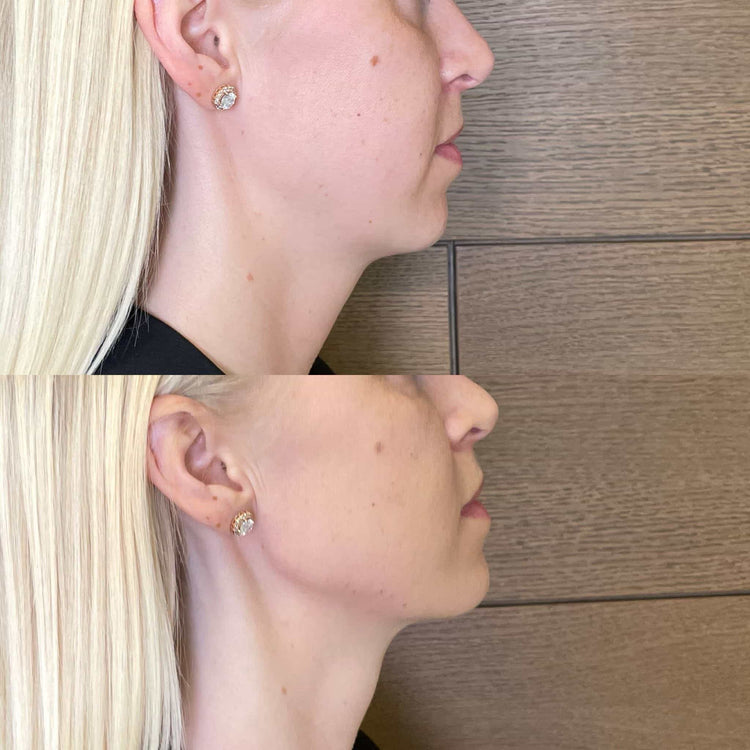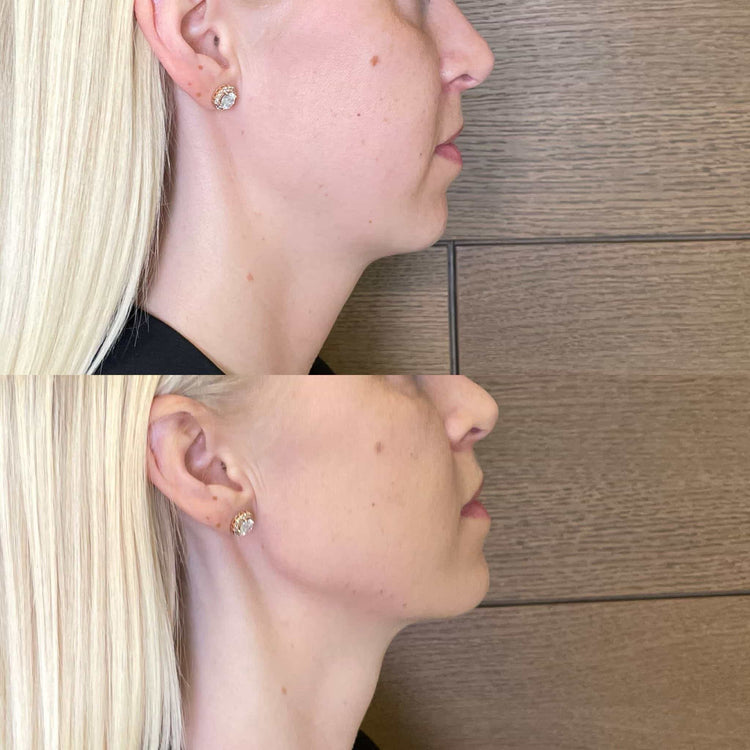Types of Jaw Filler Materials
When considering jaw augmentation, understanding the different types of filler materials available is crucial. Various options exist, each with its own properties and potential for reversibility. From hyaluronic acid-based fillers to calcium hydroxylapatite, these materials offer diverse solutions for enhancing jawline contours and achieving desired facial aesthetics.
Hyaluronic Acid Fillers
When considering jaw augmentation, understanding the different types of filler materials available is crucial. Various options exist, each with its own properties and potential for reversibility. From hyaluronic acid-based fillers to calcium hydroxylapatite, these materials offer diverse solutions for enhancing jawline contours and achieving desired facial aesthetics.
Hyaluronic Acid Fillers
- Hyaluronic acid is a naturally occurring substance in the body that helps to hydrate and plump the skin.
- Jaw fillers made with hyaluronic acid are temporary, typically lasting 6-18 months before needing replenishment.
- A key advantage of hyaluronic acid fillers is their reversibility. An enzyme called hyaluronidase can be injected to dissolve the filler and restore the original jawline shape.

Calcium Hydroxylapatite (Ca-HA) Fillers
Calcium hydroxylapatite (Ca-HA) fillers are another type of injectable material used for jaw augmentation. Ca-HA is a biocompatible mineral that is naturally found in the body’s bones and teeth.
These fillers provide volume and structure to the jawline, resulting in a more defined contour. Unlike hyaluronic acid fillers, Ca-HA fillers are considered semi-permanent, typically lasting 18 months to 2 years before requiring touch-ups.
Polymethyl Methacrylate (PMMA) Fillers
Polymethyl methacrylate (PMMA) is a synthetic polymer that has been used in jaw augmentation procedures. PMMA fillers are known for their durability and long-lasting results, often remaining in the jawline for several years.
However, one of the significant drawbacks of PMMA fillers is their lack of reversibility. Once injected, they cannot be easily dissolved or removed from the body.
Reversability of Different Fillers
The field of aesthetic medicine offers a variety of options for enhancing facial features, including jawline augmentation using dermal fillers. Understanding the different types of fillers available and their properties is crucial when making an informed decision about this procedure. The reversibility of these fillers varies significantly, impacting long-term treatment considerations.
Hyaluronic Acid Fillers: Temporary and Reversible
Hyaluronic acid (HA) fillers are a popular choice for jaw augmentation due to their temporary nature and reversibility. HA is a naturally occurring substance in the body that attracts and holds water, providing volume and hydration to the skin.
These fillers typically last between 6 to 18 months before needing replenishment. One of the key advantages of HA fillers is their ability to be reversed. If desired, an enzyme called hyaluronidase can be injected to break down the filler, effectively dissolving it and restoring the original jawline shape.
Ca-HA Fillers: Semi-Permanent with Potential for Dissolving
Calcium hydroxylapatite (Ca-HA) fillers are another option for jaw augmentation. Unlike hyaluronic acid fillers which are temporary, Ca-HA fillers are semi-permanent, lasting around 18 months to 2 years before needing touch-ups.
While they offer a longer-lasting effect compared to HA fillers, Ca-HA fillers do not completely dissolve in the body. They are gradually absorbed over time.
PMMA Fillers: Permanent and Non-Reversible
Polymethyl methacrylate (PMMA) is a synthetic polymer used for jaw augmentation.
PMMA fillers are known for their permanence, remaining in the jawline for several years. However, this permanency also means they cannot be easily dissolved or removed if desired changes occur.
Factors Affecting Reversibility
The reversibility of a jaw filler is a crucial factor to consider when making a decision about jaw augmentation. Different types of fillers have varying degrees of permanence, influencing long-term treatment considerations. Understanding these differences is essential for choosing the most suitable option based on individual needs and aesthetic goals.
Filler Type and Amount Used
The reversibility of a filler significantly impacts long-term treatment considerations. Hyaluronic acid (HA) fillers are readily reversible due to their temporary nature. An enzyme called hyaluronidase can be injected to dissolve HA fillers, restoring the original jawline shape if desired changes occur.
Calcium hydroxylapatite (Ca-HA) fillers offer a longer-lasting effect compared to HA fillers but are not fully reversible. They are gradually absorbed by the body over time, lasting approximately 18 months to 2 years before requiring touch-ups.
Polymethyl methacrylate (PMMA) fillers stand out due to their permanence, remaining in the jawline for several years. However, this permanency comes at the cost of irreversibility; once injected, PMMA cannot be easily dissolved or removed.
The amount of filler used also plays a role in achieving the desired outcome and influencing reversibility. Smaller amounts are generally easier to dissolve if necessary, whereas larger volumes may require more complex procedures for removal.
Placement Depth
Several factors influence the reversibility of jaw fillers. The type of filler material is paramount. Hyaluronic acid (HA) fillers, being temporary, can be dissolved with an enzyme called hyaluronidase. Calcium hydroxylapatite (Ca-HA) fillers offer a longer duration but are semi-permanent, gradually absorbed by the body over time. Polymethyl methacrylate (PMMA), known for its permanence, lacks reversibility once injected.
Placement depth also impacts reversibility. Fillers placed superficially are generally easier to dissolve or remove compared to those injected deeper into the tissues. Deeper placement may necessitate more complex procedures for reversal if desired.
Individual Body Response to Filler Material
The reversibility of jaw fillers is a crucial factor to consider when making a decision about jaw augmentation. Different types of fillers have varying degrees of permanence, influencing long-term treatment considerations.
- The type of filler material used is the most significant factor. Hyaluronic acid (HA) fillers are temporary and can be dissolved with an enzyme called hyaluronidase.
- Calcium hydroxylapatite (Ca-HA) fillers offer a longer-lasting effect but are semi-permanent, gradually absorbed by the body over time.
- Polymethyl methacrylate (PMMA) is permanent and cannot be easily dissolved or removed.
Placement depth also plays a role in reversibility. Fillers placed superficially are generally easier to dissolve or remove compared to those injected deeper into the tissues.
Procedure for Reversal of Hyaluronic Acid Fillers
The reversibility of jaw fillers is a crucial factor to consider when making a decision about jaw augmentation. Different types of fillers have varying degrees of permanence, influencing long-term treatment considerations. Hyaluronic acid (HA) fillers are temporary and can be dissolved with an enzyme called hyaluronidase, offering the flexibility to reverse the treatment if desired. Calcium hydroxylapatite (Ca-HA) fillers offer a longer-lasting effect but are semi-permanent, gradually absorbed by the body over time. Polymethyl methacrylate (PMMA) is permanent and cannot be easily dissolved or removed once injected.
Dissolution with Hyaluronidase Enzyme
Dissolution of hyaluronic acid fillers is achieved through the use of an enzyme called hyaluronidase. Hyaluronidase breaks down the hyaluronic acid molecules, effectively dissolving the filler and restoring the original jawline shape. The procedure typically involves injecting hyaluronidase directly into the area where the filler was previously placed.
The effectiveness of hyaluronidase depends on several factors, including the amount and type of filler used, the location of the injection, and individual patient responses. It is important to note that hyaluronidase may not completely dissolve all hyaluronic acid fillers, and some residual volume may remain. Multiple sessions of hyaluronidase injections might be necessary to achieve complete dissolution.
Timing After Injection
The reversibility of jaw fillers depends largely on the type of filler used.
Hyaluronic acid (HA) fillers are temporary and can be reversed using an enzyme called hyaluronidase. This enzyme breaks down the hyaluronic acid, effectively dissolving the filler and restoring the original jawline shape.
Ca-HA fillers, on the other hand, are semi-permanent and last for approximately 18 months to 2 years before needing touch-ups. They are gradually absorbed by the body over time.
Polymethyl methacrylate (PMMA) fillers are permanent and cannot be easily dissolved or removed.
The ideal timing for reversal depends on individual circumstances and the type of filler used. For HA fillers, hyaluronidase can be injected at any point after placement if the desired outcome is no longer desired.
With Ca-HA fillers, waiting until the filler has largely been absorbed by the body might be advisable to minimize the need for repeated injections or procedures.
PMMA fillers generally cannot be reversed, so careful consideration should be given before choosing this type of filler.
Risks and Considerations for Reversal Procedures

When considering jaw augmentation with fillers, it’s crucial to understand the reversibility aspects associated with different materials. Hyaluronic acid (HA) fillers are temporary and can be reversed using hyaluronidase, an enzyme that breaks down HA. This allows for adjustments or removal of the filler if desired. Calcium hydroxylapatite (Ca-HA) fillers offer a longer-lasting effect, gradually being absorbed by the body over time. While not fully reversible, they do allow for more gradual fading rather than a sudden change.
Polymethyl methacrylate (PMMA), on the other hand, is permanent and cannot be easily dissolved or removed. Therefore, it requires careful consideration as it offers no option for reversal if desired changes occur in the future.
The decision regarding filler type should involve a thorough consultation with a qualified medical professional who can assess individual needs, facial structures, and aesthetic goals. They can provide personalized guidance on the most suitable filler type considering both desired outcomes and long-term implications.
Alternative Options to Filler Reversal

Understanding the reversibility of jaw fillers is essential when deciding on this cosmetic procedure. While various options exist, each with distinct properties, some offer temporary solutions easily reversible with enzyme injections, while others provide lasting results without the option for reversal.
Enzymatic Fat Reduction (Kybella)
When considering jaw augmentation, understanding the different types of filler materials available and their reversibility is crucial.
- Hyaluronic Acid (HA) Fillers: These are temporary, lasting 6-18 months before needing replenishment. Their key advantage is reversibility; an enzyme called hyaluronidase can dissolve the filler.
- Calcium Hydroxylapatite (Ca-HA) Fillers: These are semi-permanent, lasting 18 months to 2 years before touch-ups are needed. While they offer a longer duration than HA fillers, they are not fully reversible and are gradually absorbed by the body.
- Polymethyl Methacrylate (PMMA) Fillers: These provide long-lasting, even permanent results, but lack reversibility once injected.
Surgical Revision or Removal
Alternatives to filler reversal, surgical revision or removal for jaw fillers depend on the type of filler used and the desired outcome.
If hyaluronic acid (HA) is used, hyaluronidase injections can be administered to dissolve the filler. This process is generally safe and effective for reversing HA filler effects.
For calcium hydroxylapatite (Ca-HA) fillers, which are semi-permanent, waiting for them to be naturally absorbed by the body might be the most viable option. Touch-up appointments can help manage volume changes over time.
Polymethyl methacrylate (PMMA) fillers are permanent and currently lack a reliable method for removal or reversal. In cases where PMMA filler results are unsatisfactory, careful consideration should be given to alternative aesthetic procedures that address the desired outcome without relying on PMMA.
It is crucial to discuss potential alternatives with a qualified medical professional who can assess individual circumstances, weigh risks and benefits, and recommend the most appropriate course of action.
Achieve a sharp jawline with jaw fillers from Dr. Laura Geige at It’s Me & You Clinic
